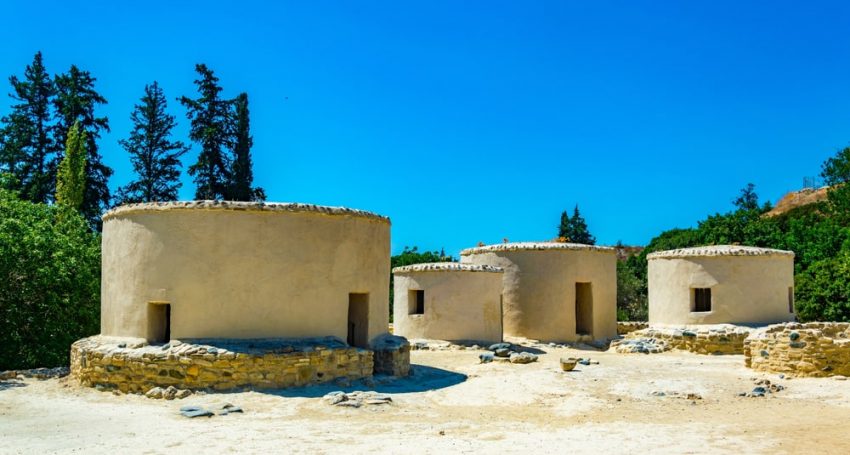The village of Choirokoitia, northeast of Limassol, is one of the best preserved monuments of the Neolithic period in the Mediterranean. The village is located 6km from the sea on a hillside in a valley through which the Maroni River flows.
Location
In 1998, Choirokoitia was inscribed on the UNESCO World Heritage List.
The importance and main difference of this settlement from its predecessors is that it is a clear illustration of the life of an archaic society in the form of an organized settlement with fortifications that served to protect against external enemies. There are a total of about 20 Neolithic-aceramic settlements in Cyprus, but Choirokoitia is the most interesting of all.
The inhabitants of the settlement were engaged in crop cultivation and animal husbandry. Choirokoitia was a rather isolated village, cut off from the outside world by a powerful stone wall. The river served as an additional protection for the villagers.
The village could be accessed through several entrances to the wall.
The buildings in the village were densely standing next to each other in a cylindrical oval shape.
Some of the buildings had a flat roof and some of them had a dome-shaped roof.
The outside diameter varies from 2.3 m to 9.2 m, while the inside diameter varies from 1.4 m to 4.8 m.
The internal structure of each structure was designed according to its purpose. The low walls and pedestal were probably used for cooking and heating. Some buildings have food storage sectors, benches, and windows – these were probably used for rest and sleep. During its heyday, the population of the village was between 300 and 600 people.
Based on the height of the doorways and other data, people were low at that time. The average height of men was 160 cm and that of women was about 147 cm. Life expectancy of men was about 35 years, women lived about 30-33 years.
The dead were buried in a sitting position right under houses. In some cases, in burial places there were gifts for deities: jewels, coins, jugs with wine, household utensils.
It is known that in the Neolithic Age, the population of Cyprus lived by the canons of a well-organized developed society. The main activities of people at that time were farming, hunting and animal husbandry.
The inhabitants mainly grew cereals. There were also fruit and citrus trees, as well as nuts and olives. The inhabitants tamed wild deer, sheep, goats and pigs.
History
The villagers suddenly left the village for unknown reasons. It happened about 6,000 times. They probably not only moved to another place, but also left the island, which remained uninhabited for the next 1500 years. The following signs of human presence were found in settlements near the village of Sotira.
The name of the village
Most linguists tend to believe that the name of the village of Hirokitia comes from a fusion of two words: Hiros (pig, boar) and Kitty (stall, stable). According to other sources, the village name originally sounded like “Sidirokitida”, the place where an iron deposit was found.
There is also evidence that the settlement was called “Ierokitida” – “the holy place”.
Pitch or holiness? At your discretion!
In the village, in addition to Neolithic buildings, there is an interesting monument of Christian architecture – the church of Panagia tu Campu.
Hirokitia is worth spending the weekend here!
Our recommendations
Where to stay:
Cyprus Villages Traditional Houses
Best taverns/restaurants in the village
Rainbow Restaurant
Phengarópetra
Danay’s Olive Restaurant
Choirokoitia Palace Restaurant
What to try:
Traditional dishes of Cypriot cuisine – stefado, kleftico, suvla, hemista, con.
We also recommend visiting The Old Coffee Shop for tasting Cyprus coffee and sweets.


